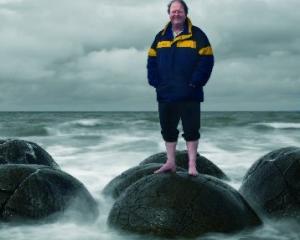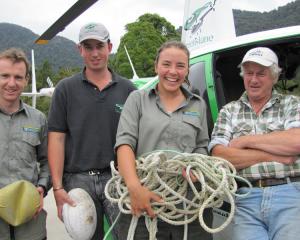A Hot Water Beach property owned by illicit arms dealer John Mabey is being turned into an ecological development featuring the biggest wetland restoration on the Coromandel Peninsula.
The 25ha Mabey family farm was bought in a mortgagee sale early this year by four brokers from Mabey's insurance firm in Auckland.
Mabey was sentenced earlier this month to 21 months in prison after pleading guilty to a charge of selling pistols, military-style semi-automatic firearms, and restricted weapons to unlicensed people.
He has pleaded not guilty to a charge of making a false burglary complaint.
Orua Wetland Estate part-owner Alan Mearns said he and his partners had always known about the place, which had been in the Mabey family for many years, and seized the opportunity to buy it.
A former policeman, Mr Mearns said Mr Mabey's actions were disappointing and he was now facing the consequences of his actions.
The group initially had thoughts of farming the property in the short-term and subdivision in the longer term.
But when land use consultant Duncan McNab visited the property in winter, he advised them to think again.
"Duncan told us the cows would either have to have webbed feet or very long legs," Mr Mearns said.
Subdivision across the whole property was also out. Eighteen hectares of it is a natural wetland which has been partially drained but reverts to being a swamp in winter.
The group took Mr McNab's advice to consider alternative uses for the land and decided to develop something unique. They cleared out piles of junk from the property and called in environmental consultants to help restore the wetland and develop just five sections.
Whangapoua ecology consultant Meg Graeme is delighted to be involved.
Most freshwater wetlands on the peninsula have been cleared and drained and less than 1 percent of the original wetland area was protected, she said.
"This one property has doubled the area of wetland protected by covenant by Thames Coromandel District Council."
The wetland will link with Department of Conservation land at the northern end of Hot Water Beach and other adjoining covenanted pockets of wetland.
The first step in the restoration was to remove grazing cattle and then fill in drains to allow the floodplain to absorb floodwaters and stay wet for longer. Networks of overflow channels and ponds were dug to recreate more natural watercourses and encourage wildlife to return.
About 40,000 plants were planted in locally sourced cabbage trees, flaxes, manuka and sedges in one section of the wetland and other parts have been left to restore themselves through what Ms Graeme calls natural design.
The project is supported by Thames-Coromandel District Council, the Department of Conservation and local iwi.




